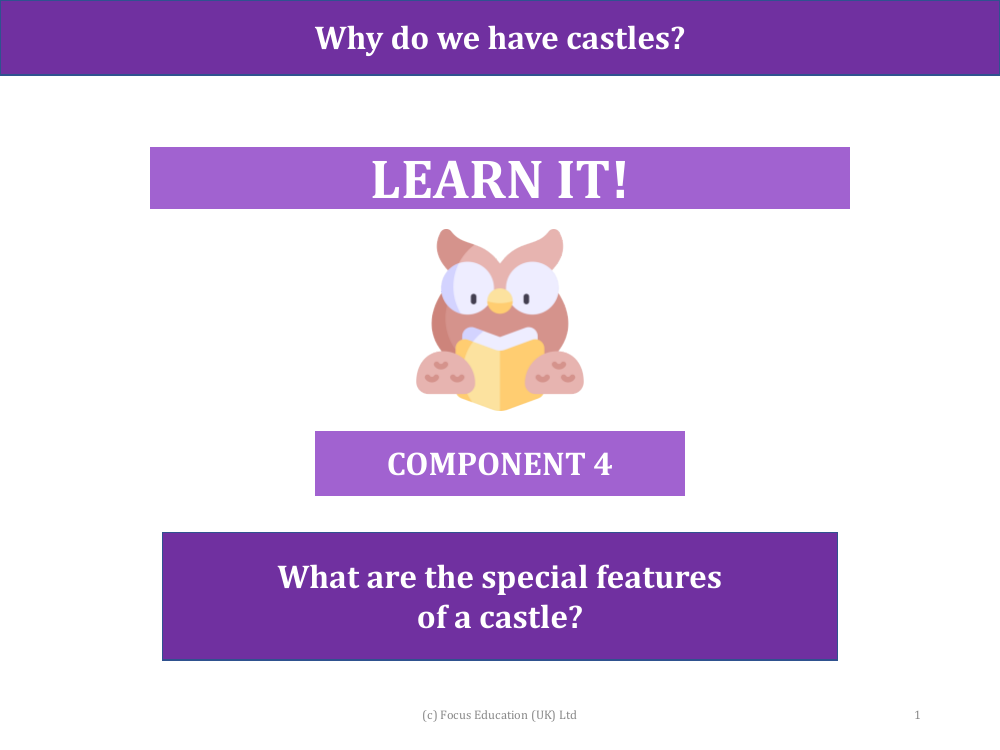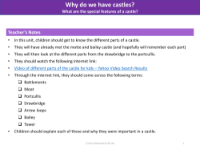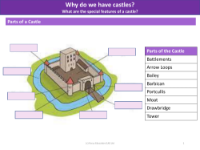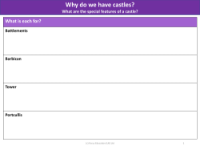What are the special features of a castle? - Presentation

History Resource Description
Castles are historical fortifications with numerous distinctive features designed for protection, residence, and power demonstration. In a unit aimed at educating children about the different parts of a castle, they are introduced to various components that are essential to a castle's defense and functionality. Initially, children revisit the concept of the motte and bailey castle, a common early form of castle, with the hope that they recall the individual parts. They then progress to learning about more complex elements, including the drawbridge and portcullis, which are crucial for controlling access to the castle.
Key terms associated with castles are explored through an engaging video, which illustrates the specific parts such as battlements, moat, portcullis, drawbridge, arrow loops, bailey, and tower. Each term is not only identified but also explained in terms of its significance and purpose within the castle structure. For instance, battlements provided a defensive position for archers, while the moat, a water-filled ditch surrounding the castle, hindered attackers. The portcullis, a heavy, vertically-closing gate, and the drawbridge served as security measures for the entrance. Arrow loops allowed defenders to shoot at enemies with minimal exposure, and the bailey was an enclosed courtyard. Towers were critical for surveillance and as a last line of defense. Through this educational journey, children gain an understanding of why castles were built and how each feature contributed to their formidable reputation.




